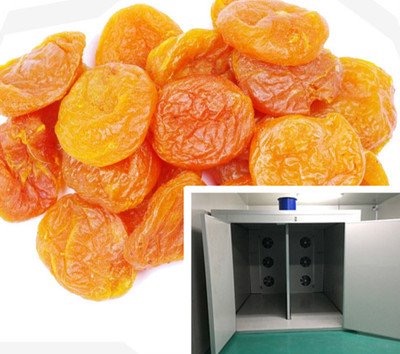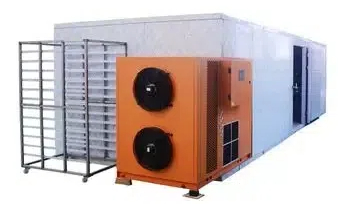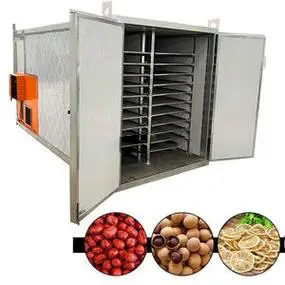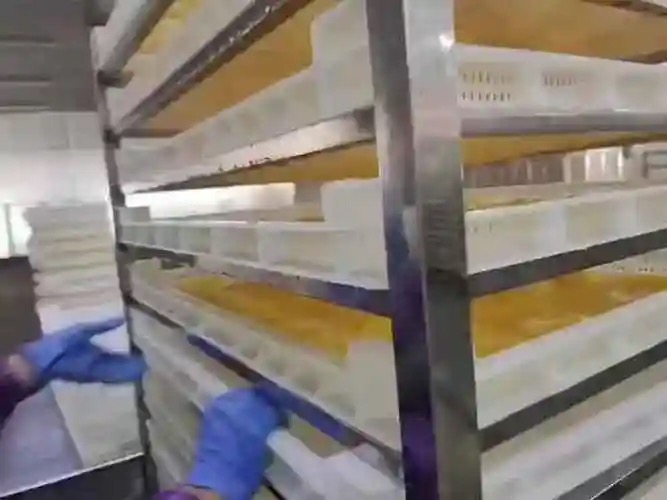
Content Menu
● Introduction
● What is a Food Drying Machine?
● Benefits of Using a Food Drying Machine
>> 1. Extended Shelf Life
>> 2. Nutritional Retention
>> 3. Cost-Effective
>> 4. Convenience
>> 5. Versatility
● How Does a Food Drying Machine Work?
● Midea Heat Pump Dryer: A Game Changer in Food Drying
>> Advantages of Midea Heat Pump Dryer
>> Applications of Midea Heat Pump Dryer in Food Processing
● Choosing the Right Food Drying Machine
>> 1. Capacity
>> 2. Temperature Control
>> 3. Ease of Use
>> 4. Energy Efficiency
>> 5. Durability
● Common Misconceptions About Food Drying Machines
>> Misconception 1: Dried Foods Lack Flavor
>> Misconception 2: Only Certain Foods Can Be Dried
>> Misconception 3: Dried Foods Are Unhealthy
● Tips for Successful Food Drying
● Conclusion
● Frequently Asked Questions (FAQs)
>> 1. What Types of Foods Can Be Dried?
>> 2. How Long Does It Take to Dry Food?
>> 3. Can I Use My Oven Instead of a Food Dryer?
>> 4. How Should I Store Dried Foods?
>> 5. Is It Safe to Dry Meat at Home?
Introduction
In today's fast-paced world, food preservation is more crucial than ever. Food drying machines have emerged as a popular solution for extending the shelf life of various food products while maintaining their nutritional value. This article will explore the intricacies of food drying machines, focusing on their benefits, features, and how they compare to traditional methods. We will also discuss the Midea heat pump dryer and its relevance in the food drying industry.

What is a Food Drying Machine?
A food drying machine is a specialized appliance designed to remove moisture from food items, thereby inhibiting the growth of bacteria, yeast, and mold. By reducing moisture content, these machines help preserve the flavor, texture, and nutritional quality of food. The process of drying can be achieved through various methods, including air drying, sun drying, and using dehydrators or heat pump dryers.
Benefits of Using a Food Drying Machine
1. Extended Shelf Life
Food drying significantly extends the shelf life of fruits, vegetables, meats, and herbs. Dried foods can last for months or even years without refrigeration. This is particularly beneficial for those who want to stock up on seasonal produce or create emergency food supplies.
2. Nutritional Retention
Unlike some preservation methods that involve heat or chemicals, food drying retains most vitamins and minerals. This makes dried foods a healthier option compared to canned or processed alternatives. For instance, dried fruits like apricots and raisins retain their fiber content and essential nutrients.
3. Cost-Effective
Investing in a food drying machine can save money in the long run. You can buy seasonal produce in bulk when prices are low and dry them for later use. Additionally, dried foods are often less expensive than their fresh counterparts when purchased out of season.
4. Convenience
Dried foods are lightweight and easy to store, making them perfect for camping trips or emergency preparedness kits. They require no refrigeration and can be easily packed for travel.
5. Versatility
Food drying machines can handle a wide variety of food items, including fruits, vegetables, meats, and herbs. This versatility allows users to experiment with different recipes and create unique snacks. For example, you can create your own fruit leathers or vegetable chips at home.

How Does a Food Drying Machine Work?
Food drying machines utilize heat and airflow to evaporate moisture from food items. The process generally involves the following steps:
1. Preparation: Wash and slice food items into uniform pieces for even drying.
2. Loading: Place the prepared food on trays within the machine.
3. Setting Temperature: Adjust the temperature settings according to the type of food being dried.
4. Drying Process: The machine circulates warm air around the food, gradually removing moisture.
5. Cooling: Once dried, allow the food to cool before storing it in airtight containers.
Midea Heat Pump Dryer: A Game Changer in Food Drying
The Midea heat pump dryer is an innovative appliance that has gained popularity in various sectors, including food processing. Unlike traditional dryers that use direct heat sources, heat pump dryers operate using a closed-loop system that recycles hot air.
Advantages of Midea Heat Pump Dryer
- Energy Efficiency: Midea heat pump dryers consume significantly less energy compared to conventional dryers. This makes them an eco-friendly choice for both home users and commercial operations.
- Gentle Drying Process: The lower temperatures used in heat pump dryers help preserve the quality of delicate foods while still effectively removing moisture.
- Environmentally Friendly: These dryers produce fewer greenhouse gases due to their energy-efficient design.
Applications of Midea Heat Pump Dryer in Food Processing
The Midea heat pump dryer is suitable for various applications in the food industry:
- Fruits and Vegetables: Ideal for drying apples, bananas, tomatoes, and more without losing flavor or nutrients.
- Herbs and Spices: Perfect for preserving the aromatic qualities of herbs like basil and thyme.
- Meat Products: Effective for creating jerky or dehydrated meat snacks while ensuring safety through proper moisture removal.
The Midea heat pump dryer also offers programmable settings that allow users to customize drying times based on specific products being processed.
Choosing the Right Food Drying Machine
When selecting a food drying machine, consider the following factors:
1. Capacity
Choose a machine that fits your needs based on how much food you intend to dry at once. Larger capacity models are ideal for families or small businesses that require bulk processing.
2. Temperature Control
Look for models with adjustable temperature settings to accommodate different types of foods. Certain fruits may require lower temperatures compared to meats to ensure proper dehydration without cooking.
3. Ease of Use
Select a machine that is user-friendly with simple controls for optimal convenience. Features like digital displays and pre-set programs can enhance usability.
4. Energy Efficiency
Consider energy-efficient models like the Midea heat pump dryer to save on electricity bills while benefiting from effective drying capabilities.
5. Durability
Invest in a high-quality machine made from durable materials to ensure longevity. Stainless steel components are often more robust than plastic alternatives.
Common Misconceptions About Food Drying Machines
Misconception 1: Dried Foods Lack Flavor
Many believe that dried foods lose their flavor during processing; however, when done correctly with machines like the Midea heat pump dryer, flavors can be intensified due to moisture removal concentrating taste profiles.
Misconception 2: Only Certain Foods Can Be Dried
While some foods are better suited for drying than others—such as apples or tomatoes—a wide variety can be successfully dried using modern machines. Experimentation is key!
Misconception 3: Dried Foods Are Unhealthy
Dried foods can be healthy options if prepared without added sugars or preservatives. In fact, homemade dried fruits often contain no additives compared to store-bought versions.
Tips for Successful Food Drying
To maximize your results when using a food drying machine:
- Use Fresh Ingredients: Start with high-quality produce for better flavor retention.
- Uniform Slicing: Cut fruits and vegetables into uniform sizes to ensure even drying.
- Pre-Treat Certain Foods: Some items benefit from pre-treatment methods such as blanching or soaking in lemon juice to enhance color retention.
- Monitor Moisture Levels: Check your dried foods periodically; they should be pliable but not sticky or moist when finished.
Conclusion
Food drying machines offer numerous advantages for preserving food while maintaining its nutritional value and flavor. The Midea heat pump dryer stands out as an efficient option that meets various needs in both home kitchens and commercial settings due to its energy efficiency and gentle drying process. By understanding how these machines work and their benefits, consumers can make informed decisions about incorporating them into their food preservation practices.

Frequently Asked Questions (FAQs)
1. What Types of Foods Can Be Dried?
You can dry fruits, vegetables, meats, herbs, and even some dairy products using appropriate methods and machines.
2. How Long Does It Take to Dry Food?
The time it takes to dry food varies depending on the type of food and the drying method used but generally ranges from several hours to over a day.
3. Can I Use My Oven Instead of a Food Dryer?
While you can use an oven for drying foods, it may not be as energy-efficient or effective as dedicated food drying machines like the Midea heat pump dryer.
4. How Should I Store Dried Foods?
Store dried foods in airtight containers in a cool, dark place to maximize shelf life.
5. Is It Safe to Dry Meat at Home?
Yes, as long as you follow proper guidelines for temperature and moisture removal to ensure safety against bacteria growth.












